THE SMALL TUNAS
OTHER WAYS TO CATCH SKIPJACK & ALBACORE
PART 2
Last month, Sam Mossman wrote about trolling, spin-casting, and jig fishing for two of our lightweight tuna species: albacore and skipjack. This month he delves into other techniques for catching these vigorous sportfish.
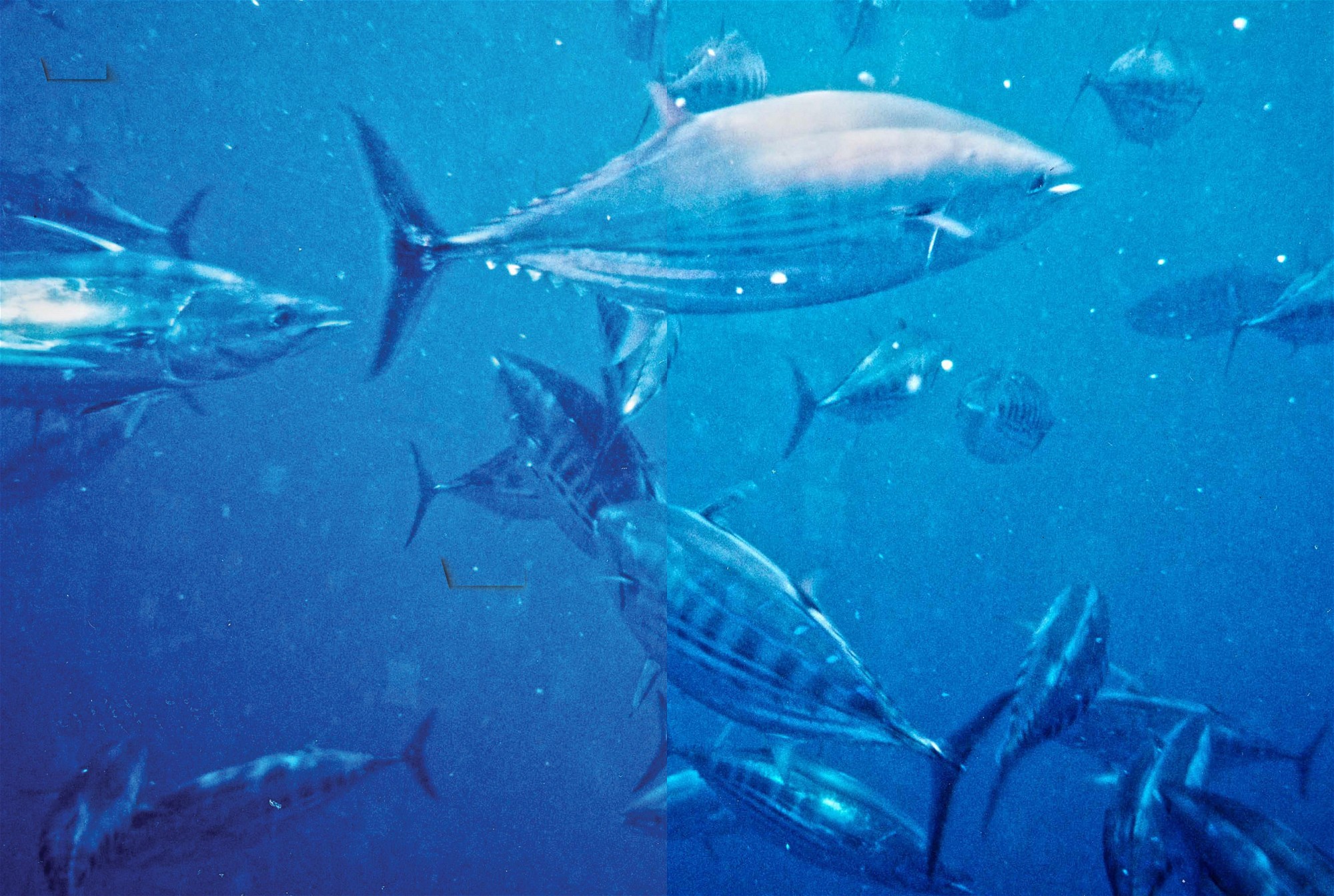
Sam snorkelled down to take this shot of feeding skipjack with the vertical stripes they show when excited.
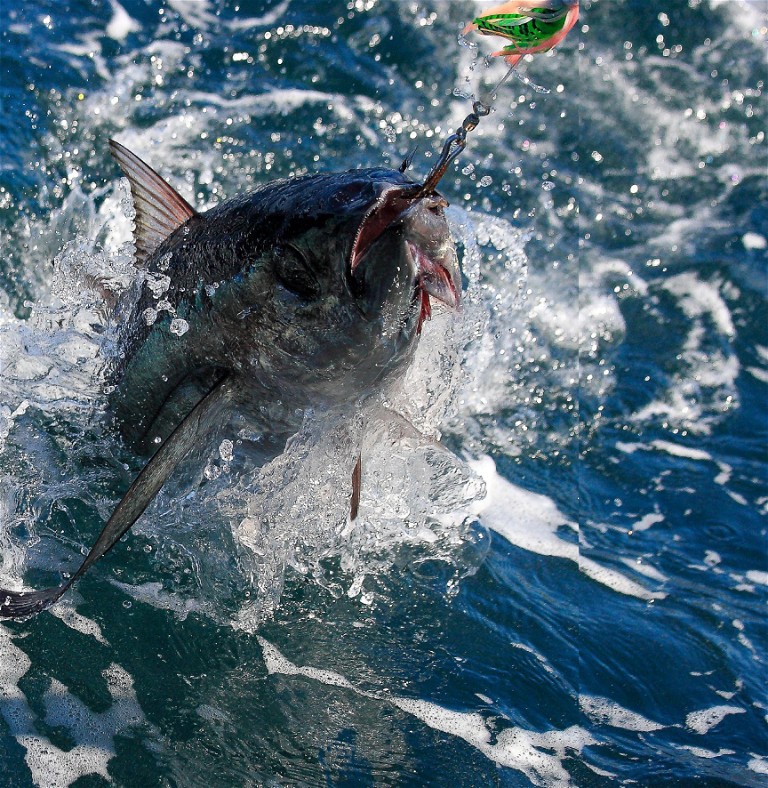
Trolling conventional tuna lures is an effective way to locate albacore schools that can then be fished with light tackle.
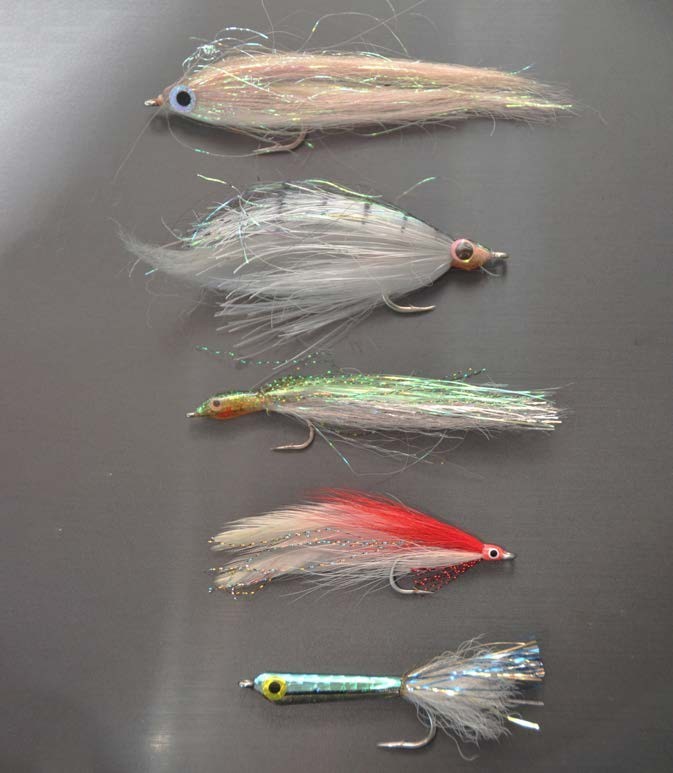
Good tuna flies imitate small baitfish. The Surf Candy (centre) is a favourite as its slim profile allows it to sink quickly.
On saltwater fly
For saltwater fly enthusiasts, skipjack and albacore represent some of the most challenging small game species that they are likely to encounter. I use fly gear ranging from 8- to 12-weight rods and 4kg to 10kg leaders. You will need at least 200 metres of backing, and sometimes this is not enough.
First, let us talk about the most difficult of the two species. This would be the skipjack. Although easy to hook up by trolling small lures or flies, catching them ‘IGFA legal’ on a cast fly from a boat with the engine out of gear can be a frustrating exercise. These ‘pocket rockets’ travel and feed at high speeds, and this makes them difficult to get a fly in front of. And even if you can present a fly in the vicinity, it can be hard to get a strike from them. This is down to speed again; this time retrieve speed. It is hard to get a fly moving fast enough to interest skipjack. Skipjack are most easily hooked in a meatball situation when they are herding up schools of baitfish such as pilchards and anchovies into tight balls of worry. The bait is under such pressure that it will take any shelter it can, including the hull of your boat. This makes the boat the centre of activity and allows the angler plenty of opportunities to cast to the skipjack. The skippies are also habituated to taking crippled, sinking baitfish in this situation, so retrieve speed of the fly may not be such a critical factor. Indeed, you may have your fly nailed on the sink.
Meatballs herded up by skipjack were a common scenario in the waters off Whakatāne in years past (before the purse-seiners got stuck into them), and may still be encountered on occasion in the summer and autumn in waters north of East Cape on both coasts.
However, even in a meatball, skipjack are not always easy to hook on fly. Chumming them with whole baitfish (like pilchards and anchovies) helps, but often a high retrieve speed is still needed. This can be achieved for a short distance by swinging the flyrod from side to side and stripping the flyline at the same time. If a strike is not forthcoming, continue the rod sweep into a back cast and shoot out the fly again. This can become a constant flow of motion, with the splash of the flyline as it is lifted from the surface, then slapped down again, further helping to excite the fish into taking.

This 10.4kg albacore was taken by the writer on a 10kg tippet, a national record that has lasted 30 years.

Small baitfish imitations, like the blue-and-white Deceiver this albacore grabbed, are ideal flies.
The longfins
Albacore are a bit easier to hook on the long rod. This is surprising really, as they have very large eyes (for their size) and great vision. I have caught several when trolling lures after dark and one, in particular, impressed me: we were over a hundred kilometres off the New Zealand coast in transit from a group of submerged offshore underwater volcanoes called ‘The Rumbles’, wide of the Bay of Plenty. The weather had turned to custard, and we were headed back towards the shelter of Great Barrier Island. It was several hours after sunset, as black as the inside of a cow, raining, rough, and blowing 30-40 knots. In the comfort of the cabin, I suddenly remembered that we still had a set of lures out the back! Damn!
I dragged on my wet weather gear, told the skipper what I was doing, and headed out into the cockpit to clear the gear. The lures, when I could get a glimpse of them in the cockpit lights, seemed to be spending more time in the air than in the churning foam and breaking white water behind us. I cleared the first rig and was reaching for the second, towing a modest-sized black and purple Tuna Clone, when the ratchet started howling! I yelled and the skipper slowed down a bit, allowing me to haul in a good-sized albacore. How it located a small black and purple lure, hours after dark, in appalling conditions and visibility, and nailed it accurately, is still a source of amazement to me, but it certainly speaks volumes for their eyesight.
Like skipjack, albacore can be taken in a meatball situation, but will also respond well to berley trails and are more easily taken from workups, right throughout the country. These fish can also be located by trolling a conventional small tuna lure, then held around the boat with a chum trail of chopped pilchard chunks while a cast is made.
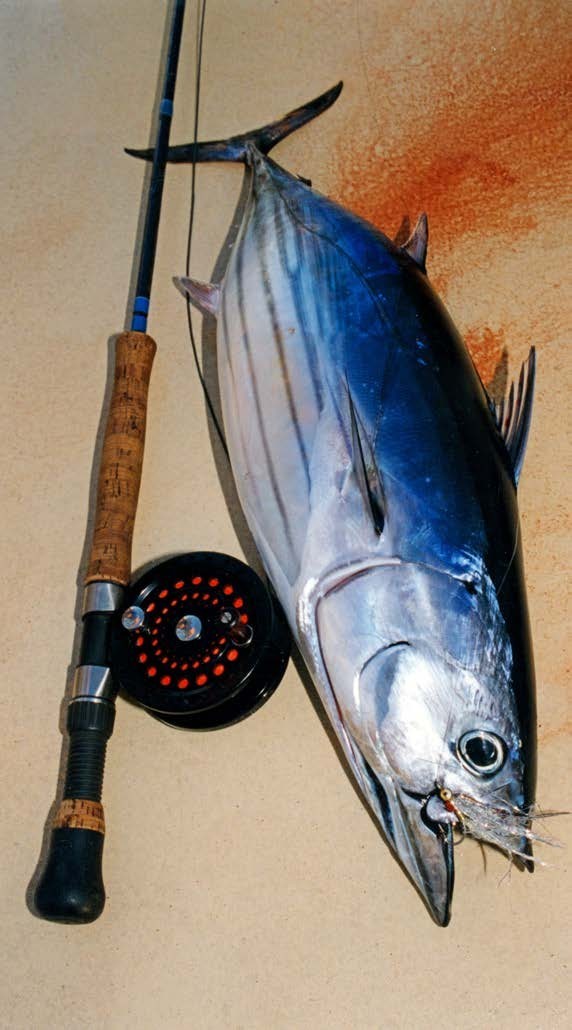
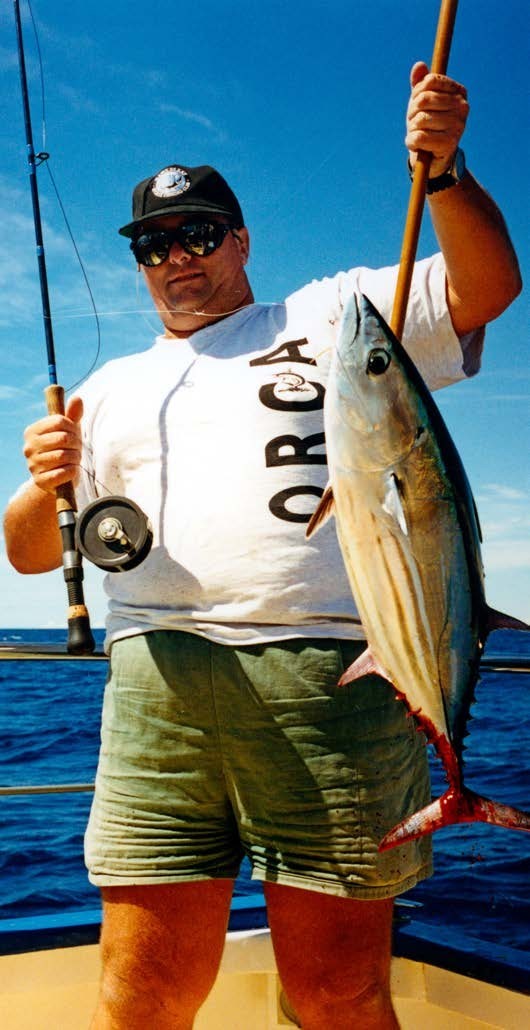
With only 200m of backing, this skipjack showed Sam his spool knot, twice!
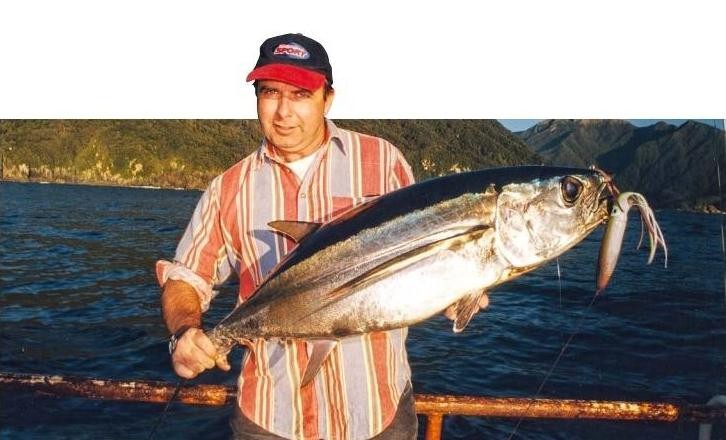
Albacore can be found from the Far North to the Deep South of New Zealand. Carl Angus with a beaut that jumped a bluefin lure off Fiordland.
Albacore tend to school vertically (rather than horizontally like skipjack), so for the longfins it can be important to get your fly down deep, quickly. A sparsely tied fly pattern sinks faster, and the incorporation of some weighting into the fly (such as lead wire or dumbbell eyes) helps, too. Use a fast-sinking line and let it sink well down, before making a rapid retrieve. The fastest legitimate retrieve technique I have used is to tuck the flyrod under one armpit and use both hands to strip the line in rapidly, hand over hand. To set the hook, strip-strike with the flyline, and at the same time twist your body to the side to bring the rod into play until you can get yourself organised.
For both species of tuna, use flies that imitate closely the size and profile of the baitfish that they are feeding on. A Surf Candy is a good pattern to start with.
Livebaits
In a meatball situation, it is sometimes possible to catch small livebaits such as anchovies or pilchards with a fine-mesh scoop net. These baitfish can be used as chum and as livebaits. A small but strong livebait hook is slipped under the bone ‘collar’ just behind the bait’s gills and it is cast or drifted away from the boat. They seldom last long. Small jack mackerel baits will also be taken on occasion, especially when sunken deep under the bait school. This species is more robust than pilchards or anchovies, and may be rigged through the nose, back or flank.
Cubes
As mentioned, cube trails will attract albacore (and skipjack as well), and they may then be caught on straylined cubes and light tackle, just as you would strayline for snapper. Another variation is to run into a surface workup, or an area where one has recently occurred, and immediately start chumming with chopped or small whole pilchards. The fish attracted this way can be held in the area with the chum so that light tackle methods can be used. Hooked albacore in the water also seem to hold other members of the school in the vicinity.
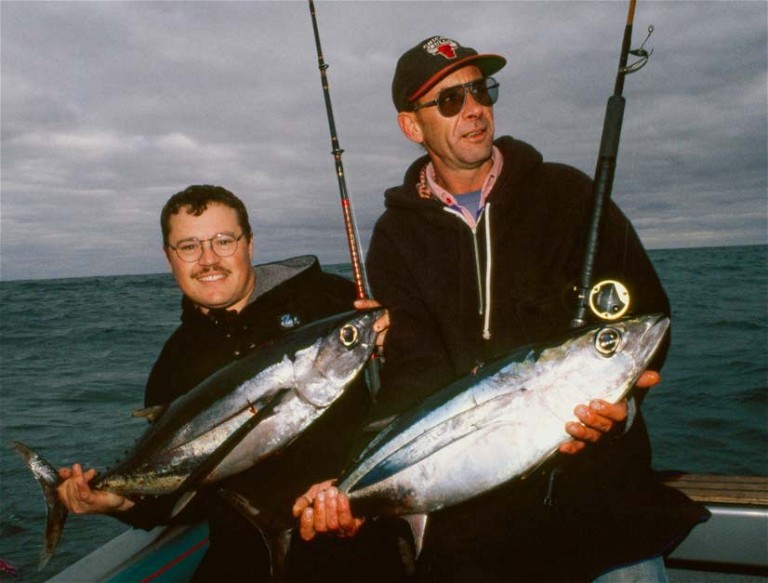
On a murky autumn day off the Manukau bar, Al Mair and Dave Ward show a pair of nice albacore, caught on straylined baits fished in a chum trail.

There is an exception to the skipjack’s usual requirement for lures to be retrieved at high speed. Sam with a skipjack on a soft plastic.
Three- to eight-kilo tackle is ideal for skipjack and albacore, and will give a great deal of fun when used on these great light-tackle sportfish. One thing is sure: these pocket rockets will soon reveal any.

Albacore will fall for chunk baits straylined in a chum trail.
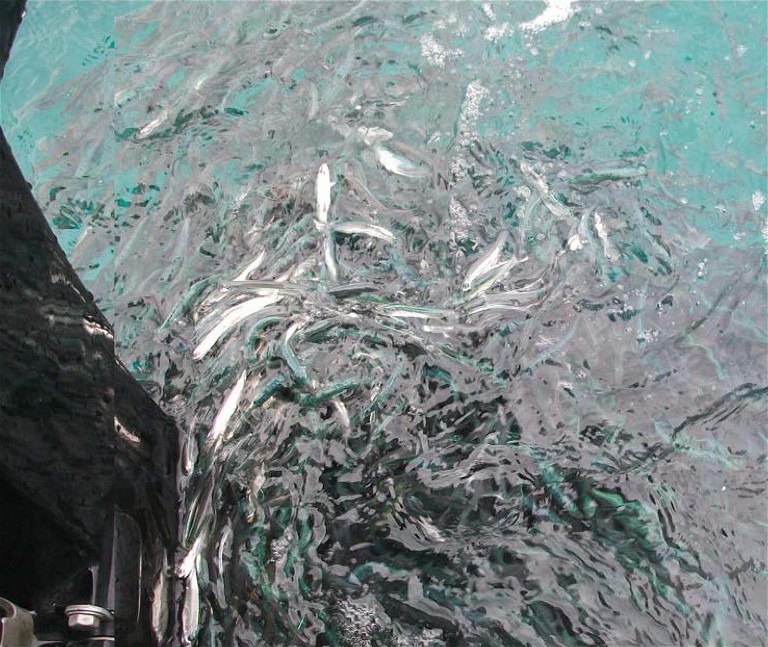
A meatball sees predators herd baitfish such as pilchards or anchovies into tight balls of worry.
Photo: Ross Grieve.

The small tunas make great flyrod targets.